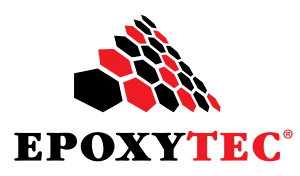BLOG / NEWS RELEASE
Understanding Easy Application in Manhole Rehabilitation
The Hidden Cost of I&I Blog Series – Blog 2
A contractor-focused educational series on inflow and infiltration in collection systems
In manhole rehabilitation, ease of application can make or break a project. The method you choose influences timelines, labor costs, and overall performance. While the materials themselves are critical, the way they’re applied often determines whether your work stays on schedule—or falls behind.
You’ve got a manhole rehabilitation project coming up. The municipality wants it done fast, done right, and with minimal disruption. Your success depends not just on choosing the right materials, but on selecting the application method that matches your project conditions and crew capabilities.
When a municipality calls for fast, reliable rehabilitation with minimal disruption, contractors must weigh two main factors: project conditions and crew capabilities. Matching the right application method to both is essential for a smooth, efficient workflow.
How Application Method Impacts Project Success
Manhole rehabilitation is rarely one-size-fits-all. Different sites, access limitations, and manhole configurations demand different approaches. The two primary techniques—spray application and trowel application—each offer distinct benefits depending on project scope, speed, and available resources.
Despite these considerations, it’s equally important to recognize the value of products specifically formulated for ease of application—particularly in logistically challenging environments. Such systems are engineered with field realities in mind and differ from technologies designed for controlled conditions or extended cure times. High-build, spray- or trowel-applied liners are strong candidates in these scenarios, offering the rapid turnaround and adaptability that below-grade rehabilitation demands—without the pause-point luxuries often available in above-ground or treatment plant applications.
Application Methods: Understanding Your Options
| Factor | Spray Application: When Speed Matters | Trowel Application: When Simplicity is Key |
|---|---|---|
| Equipment Requirements | Spray equipment, compressor, hoses | Basic hand tools, mixing equipment |
| Training Needs | Moderate – spray technique training | Minimal – standard application skills |
| Project Scalability | Excellent for large projects | Better for smaller, detailed work |
| Setup Time | Higher initial setup | Quick start capability |
| Additional Considerations | Rapid coverage of large surface areas Reduced labor time Minimizes downtime Excellent choice for time-sensitive projects | Lower barrier to entry |
💡 Equipment Planning: Factor in rental costs for spray equipment vs. the labor time savings. For multiple manholes, the math usually favors spray application.
💡 Training Reality: Don’t underestimate spray application learning curve. Plan for practice time before your first critical project.
💡 Pro Tip: Spray application can reduce labor time by 40-60% on large manholes, but requires initial equipment investment and crew training on spray techniques.
💡 Reality Check: Trowel application eliminates equipment dependencies and lets you start immediately, but plan for longer application times on large surface areas.
Application Methods in Practice: Example Projects
The trade-off between speed and simplicity ultimately comes down to scale. Spray application demands an upfront investment in training and equipment but pays dividends on large projects, especially when multiple manholes are lined in sequence. Trowel application minimizes setup time and cost, but is best suited for smaller, detailed work or one-off rehabilitations. Successful contractors understand these trade-offs and plan accordingly—balancing crew readiness, equipment access, and jobsite logistics.
High-Volume Efficiency:
In Portage, Indiana, Culy Contracting used CPP Sprayliner MH to quickly rehabilitate multiple manholes in a high-traffic area, completing the project ahead of schedule with minimal disruption.
Quick-Start Project:
In Sumter County, Florida, RCM Utilities used Trowel-Liner for intricate manholes, achieving precise application in confined spaces without the need for specialized equipment.
A Combination of Both:
The City of Clinton, Arkansas rehabilitated 58 sanitary sewer manholes using Epoxytec’s CPP Sprayliner MH AND CPP Trowel-Liner systems. This project showcases adaptive application methods to overcome access challenges.
Making the Decision
Both methods deliver results—the difference is matching the approach to your specific project conditions and crew capabilities.
| If Your Project Has The Following: | Consider This Method | Key Advantage |
|---|---|---|
| Multiple manholes (5+) | Spray Application | Equipment setup cost spreads across units – fast, efficient coverage that maximizes daily productivity |
| Single manhole repair, quick start project | Trowel Application | No equipment investment needed – start immediately with standard tools |
| Tight timeline | Spray Application | Faster coverage, quicker completion |
| Confined access | Trowel Application | No bulky equipment to maneuver |
| Large diameter manholes | Spray Application | Even coverage on big surfaces |
| Detailed repair work | Trowel Application | Precise control over material placement |
💡 Decision Shortcut: When in doubt, consider your crew’s comfort level. A confident crew with familiar tools often outperforms an uncertain crew with “better” equipment.
⚠️ Budget Reality: Factor in the total cost—not just materials. Include equipment rental, training time, and potential learning curve delays.
💡 Efficiency Tip: Both approaches have been developed to address common application challenges, allowing you to focus on project execution rather than troubleshooting complex processes.
The Bottom Line
Ultimately, the easiest application isn’t always the fastest one—it’s the one that aligns with your project conditions, crew skills, and quality requirements. A confident crew using familiar tools can often outperform a less-experienced team using more advanced equipment. The key is understanding your resources and selecting the application method that delivers the best balance between efficiency and control. And again, making sure you have a product designed for the ease one would be seeking.
Before your next rehabilitation project:
Next Steps:
- Assess your current crew capabilities and equipment access
- Calculate total project costs for both methods on upcoming jobs
- Consider ECAN training for spray application certification
Performance Matters, Experience Delivers.
Tnemec’s proven products, backed by over 100 years of development, combined with Epoxytec’s decades of expertise in collection system rehabilitation and supported by our ECAN-trained applicators, create the perfect formula for success.






